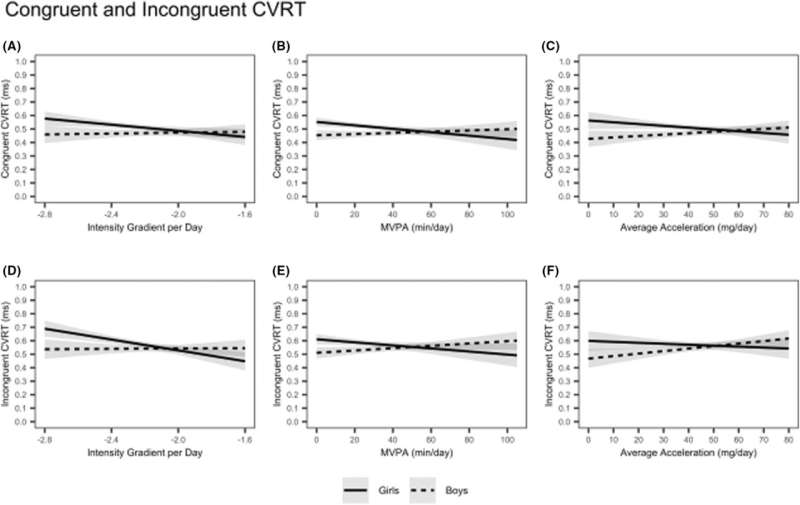This article has been reviewed according to Science X's editorial process and policies. Editors have highlighted the following attributes while ensuring the content's credibility:
fact-checked
trusted source
proofread
Study links exercise intensity, attentional control in late-adolescent girls

Adolescent girls who engage in more moderate and vigorous physical activity each day have better attentional control, a new study finds. The study focused on girls and boys aged 15-18.
The findings are detailed in the Scandinavian Journal of Medicine & Science in Sports.
"Attentional control is an aspect of inhibitory control. We can think of inhibitory control as our ability to control attention when distracted, and our ability to control acting on an impulse," said University of Illinois Urbana-Champaign kinesiology and community health professor Dominika Pindus, who led the study. "Studies have found that inhibitory control is related to better academic achievement."
Previous studies also have found that better inhibitory control is associated with "having better finances, having better health and less chances of being convicted of a crime," Pindus said.
Pindus and her colleagues used baseline data from a randomized controlled trial of high school students in New South Wales, Australia, to explore potential sex differences in the relationship between physical activity and cognition. Study co-author David Lubans of the University of Newcastle in NSW led the original study. The data collected in that research included measures of daily physical activity volume and intensity as recorded by accelerometers worn on the wrist for up to seven days.
"This device records changes in acceleration, and what we get is a continuous signal of the intensity of movement," Pindus said.
The participants also engaged in computerized cognitive tasks. "For this study, we focused on the variability of participants' response times across trials. This measure helps us understand the efficiency of higher attentional control," Pindus said.
Older adolescents' accuracy and speed are comparable to adults' performance on the attentional control tasks, Pindus said.
"However, the differences between response times from one trial to another are larger in adolescents than adults. More variable performance has been related to less efficient attentional control. Thus, we reasoned that variability in response times could be more malleable to physical activity in older adolescents," Pindus said.
The researchers evaluated the intensity of the students' physical activity over time using a measure called an "intensity gradient," which offers a broad picture of how each individual accumulates intense activity over the course of the day, Pindus said.
The "intensity gradient represents an individual's daily intensity profile," the researchers wrote. To evaluate it, researchers look at the slope of a line on a graph of the intensity the individual's activity over the course of a day. A shallower slope occurs when the person engages in a greater amount of moderate-to-vigorous activity over time. A steeper, downward slope occurs when a person engages in less vigorous activity over time.
After controlling for other variables like body mass index and aerobic fitness, the team found that the intensity gradient corresponded with the girls' ability to maintain their attention on a task in the face of distracting information in the cognitive trials. The girls who accumulated less intense physical activity over the course of the day took longer and were less accurate on tests that involved ignoring distracting information, the researchers report.
These associations were small-to-moderate, Pindus said, but are important.
"We know that we are not doing a great job in involving adolescents in physical activity," she said. "Worldwide, about 80% of adolescents are usually physically inactive. Boys tend to be more physically active than girls and to engage in more high-intensity physical activity."
The new study offers a glimpse into the possible consequences of these discrepancies, which need to be investigated in randomized controlled trials, Pindus said.
"It tells us that we may need to focus on intervention strategies that engage girls who are the least physically active in high-intensity physical activity to enhance cognitive functions important for academic achievement," she said.
More information: Dominika M. Pindus et al, Sex moderates the associations between physical activity intensity and attentional control in older adolescents, Scandinavian Journal of Medicine & Science in Sports (2023). DOI: 10.1111/sms.14311




















